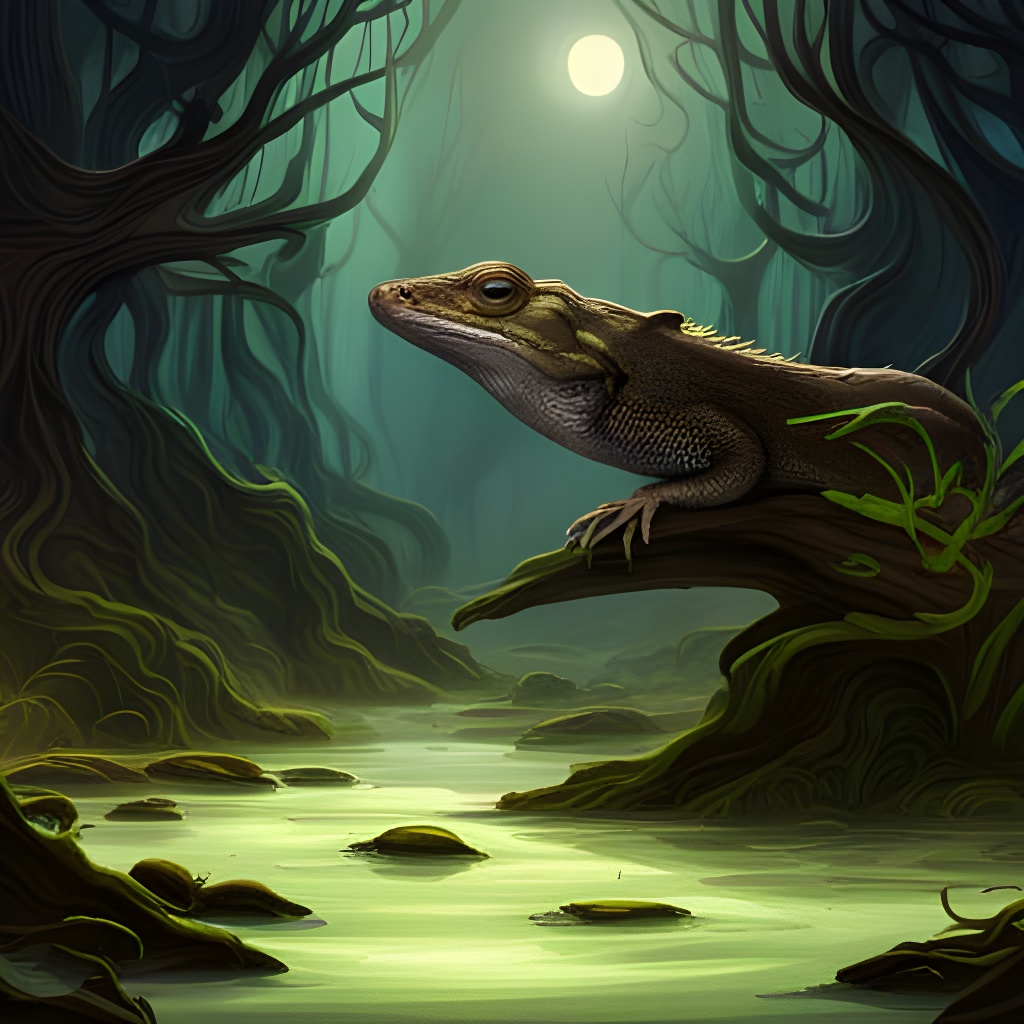Bogrunner
Bogrunners are giant skink-like lizards native the the marshes and swamps of eastern Forelliu. Though hard to capture, and even more difficult to train, Bogrunners make perfect steeds for crossing wet, boggy, and muddy areas; places a typical riding hound might find difficult or impassable. They are often bred and used by the Drow that inhabit southeast Forelliu.
Basic Information
Anatomy
Bogrunners sit low to the ground, their legs splayed out to the side rather than beneath. Their large flat heads hold two rather large eyes. They range in color from light tan to deep green.
Genetics and Reproduction
Bogrunners operate in breeding pairs and mate for life. They mate in early spring when the mosquitos and other swamp-dwelling insects begin to propagate. These lizards will lay a clutch of up to 4 eggs, which both parents take turns guarding while the other hunts. The eggs take 3-4 weeks to hatch. Newborn Bogrunners are capable of running as soon as they hatch, and subsist off small insects until they are large enough to hunt bigger prey.
Growth Rate & Stages
A Bogrunner will grow rapidly after hatching, reaching adult size by 2 years old, though they continue to grow their whole lives.
Ecology and Habitats
Bogrunners thrive in wetlands. They are adapted to run on the surface of mud and clay, and very adept swimmers.
Dietary Needs and Habits
As young, Bogrunners subsist mostly off small insects, but as they mature they begin to hunt larger game. Largely carnivorous, an adult Bogrunner's diet can include small rodents, such as muskrats or weasels, but also include large amphibians, and smaller lizards.
Biological Cycle
They are no fond of the cold and do hibernate during the winter, usually by burying themselves in wet mud during the fall and putting themselves in a comatose state in the cold mud throughout the winter.
Additional Information
Domestication
Though there are still wild Bogrunners, their uses as single-rider mounts, and pack animals in wetland areas have led to overall domestication of the species. Domesticated Bogrunners tend to be slightly bigger than their wild kin, and the fins between their toes are slightly smaller, due to generations of focus on land travel over swimming.
Uses, Products & Exploitation
Bogrunner eggs are considered a delicacy in southeastern Forellian cooking. Bogrunner leather is sought after by the wealthy.
Perception and Sensory Capabilities
Bogrunners have excellent eyesight and are capable of seeing in the dark nearly as well as they do in the day. Having lived and worked alongside Drow more than any other species.
Scientific Name
Drek Eidechse
Lifespan
6-8 years in the wild. 15 in captivity.
Conservation Status
Vulnerable. Growing cities and industrialization have slowly encroached on the Bog Runners native territory. Some dealers have begun breeding them in captivity to sustain the mount industry.
Average Height
1-1.5 feet from foot to head.
Average Weight
250-300 lbs
Average Length
1-15 feet



Comments